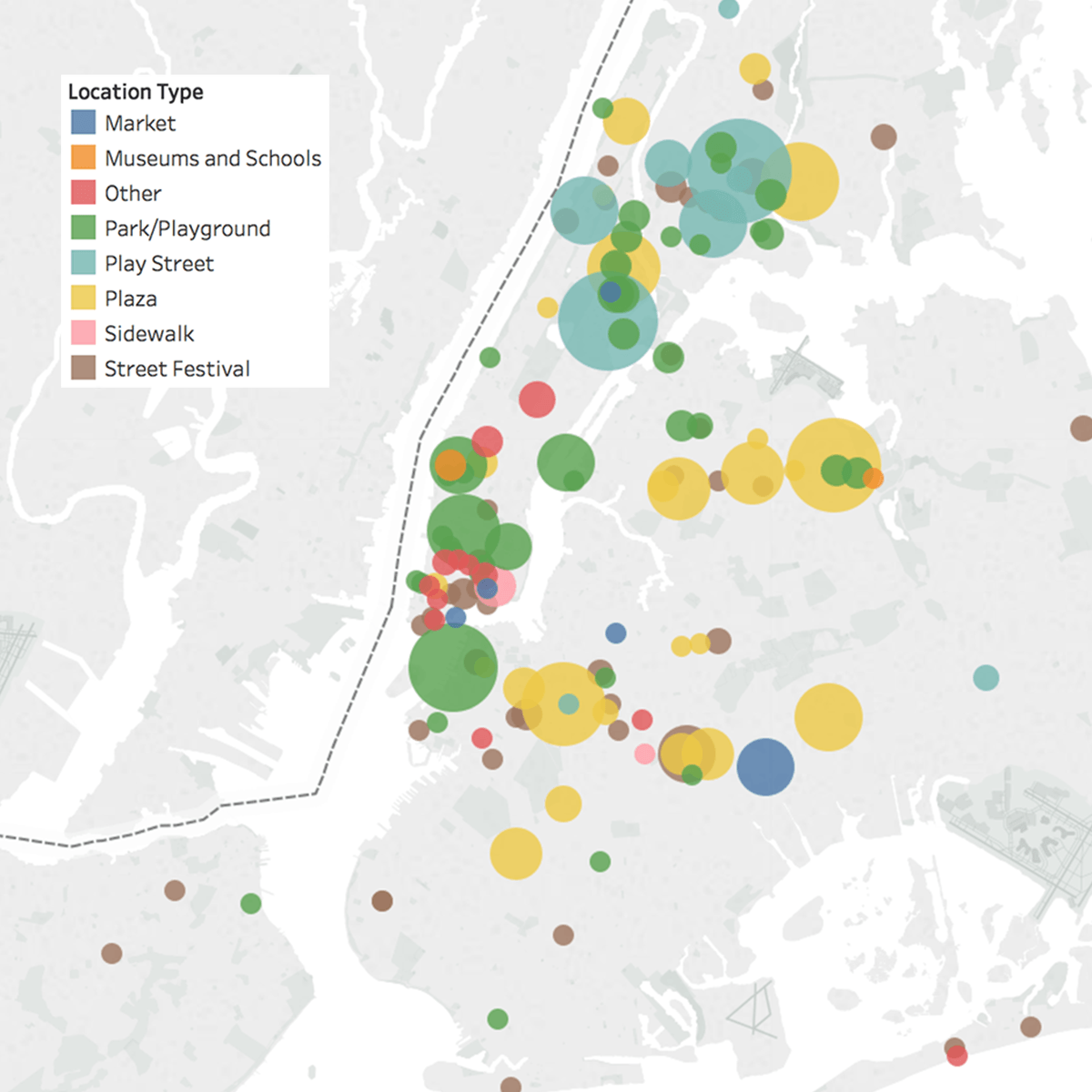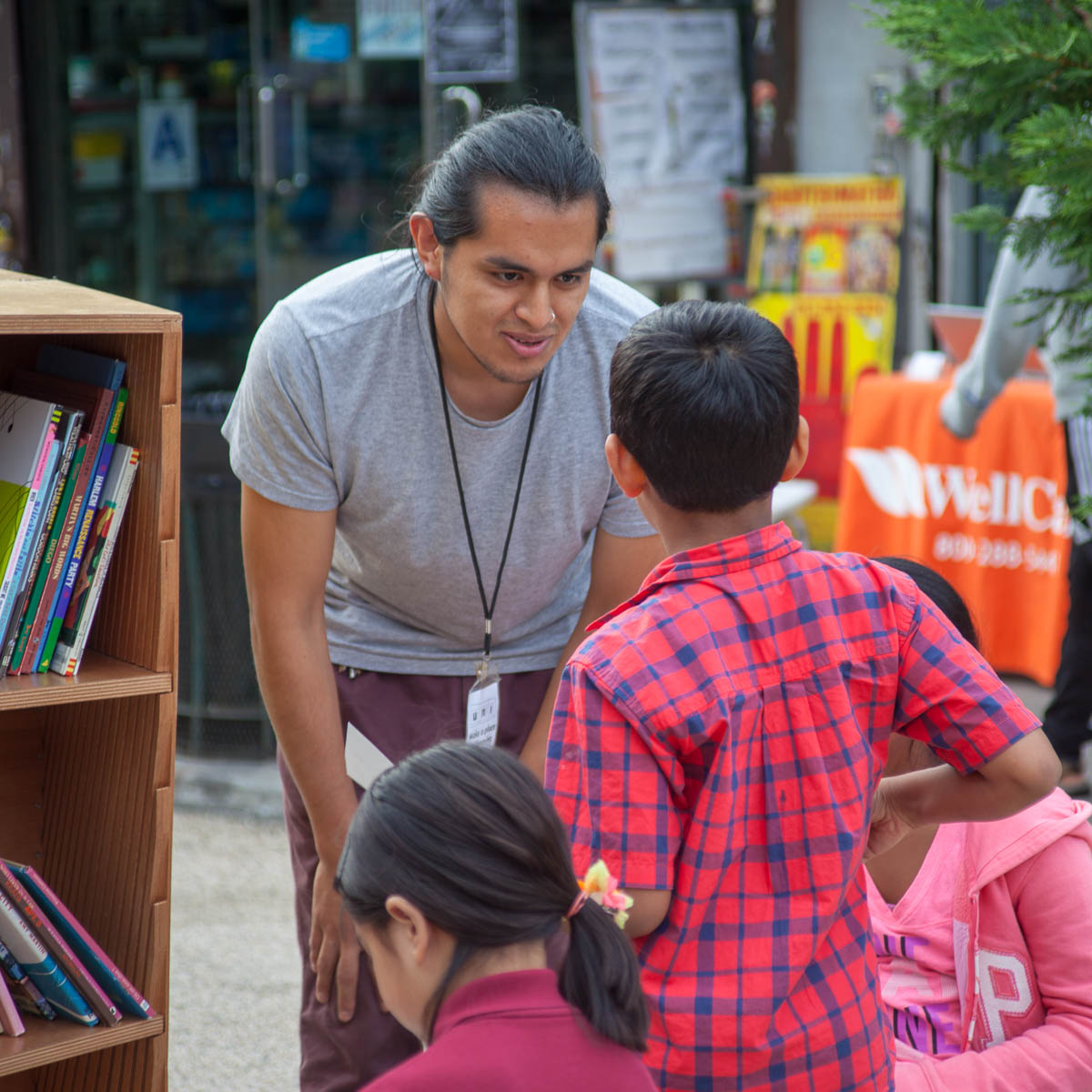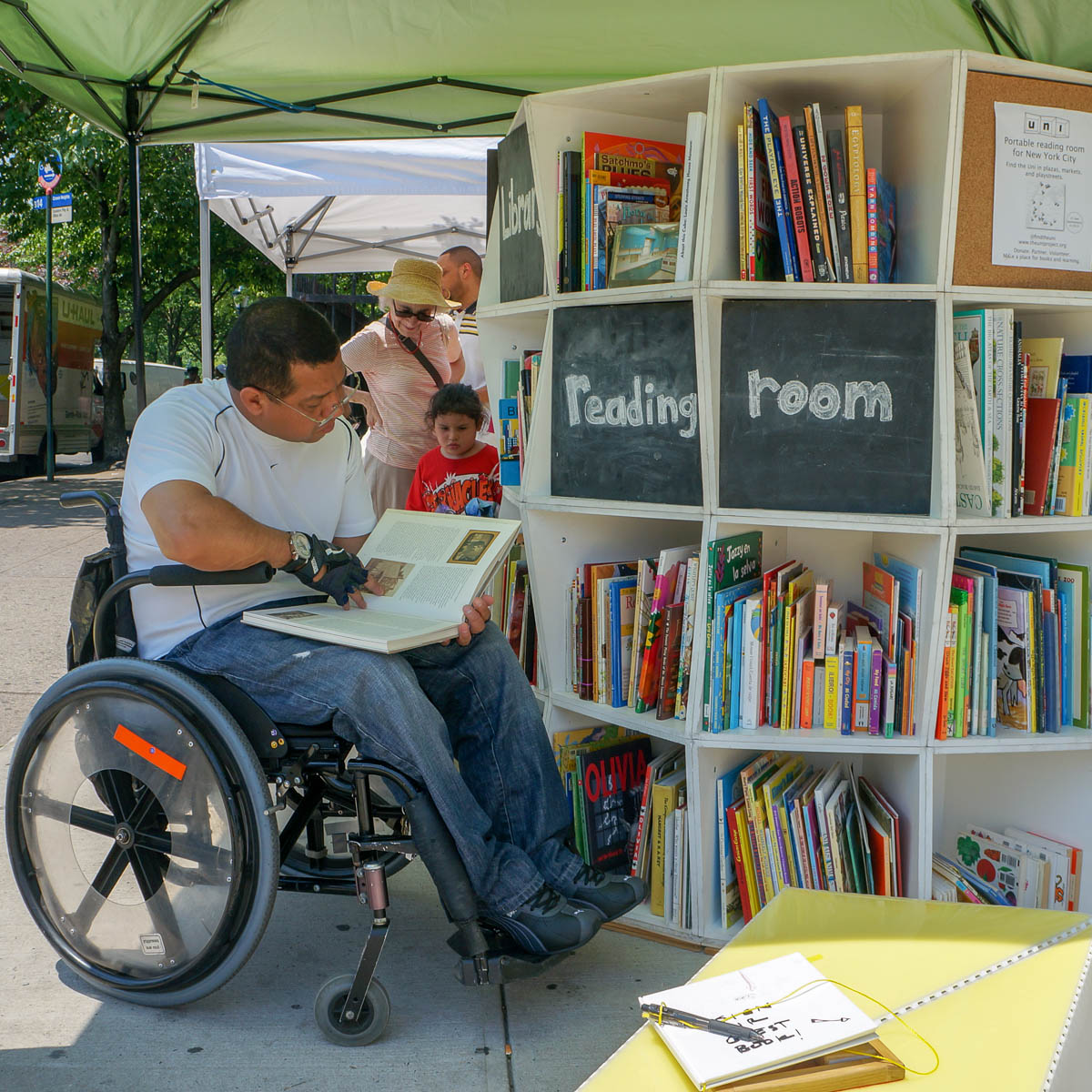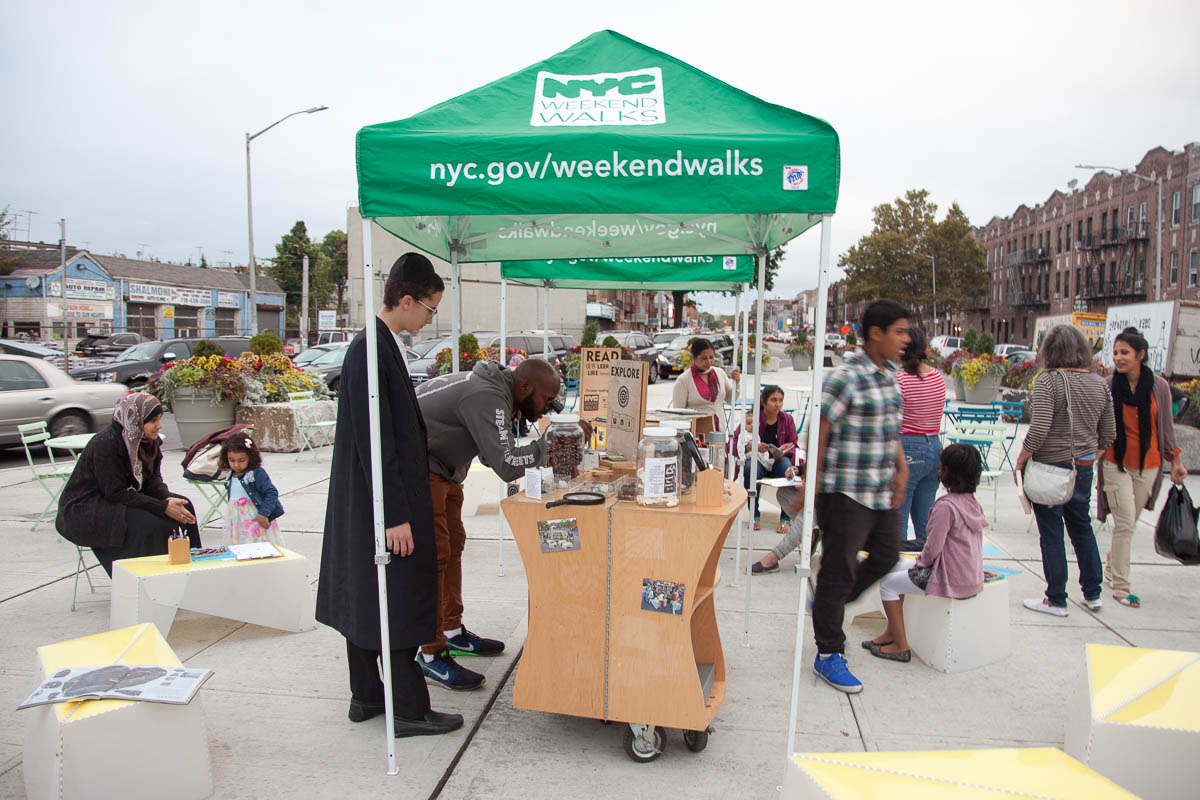Inclusion and Diversity
This organization—as a place to work, as a partner to others, and as a creator of public experiences—should represent New York City at its best. To us, that means creating a place where people from all walks of life can gather together and be better for it. Inclusion is at the core of Street Lab, on the street and behind the scenes, and we aim to keep getting better at it.
Leslie and Sam Davol, Founders of Street Lab

Serve New Yorkers from all walks of life.
Our commitment to serve all kinds of people across New York City means that we need to work hard to be inclusive in staffing, program development, design, and more. Here’s an example: try creating a successful pop-up reading room in Corona, Queens. You’ll quickly find that you need multilingual signage, books in different languages, and welcoming staff who can talk with people in the neighborhood. To date we’ve worked in 435+ different NYC locations, 82% in low to moderate income neighborhoods. Who we serve shapes who we are as an organization.

Hire staff who can foster inclusion.
To work in so many locations across the five boroughs, we need staff who are absolutely comfortable with diversity. We hire people who are motivated to make everyone feel welcome, wherever we land. As a starting point, we encourage New Yorkers who live in and have a connection to the communities where we work to apply to work with us. Here’s our Equal Employment Opportunity Policy.

Create installations that are open to all.
In designing experiences for the public, we aim to remove barriers to participation, whether they be physical, psychological, or social. You should feel comfortable walking or wheeling up to one of our pop-ups and joining other people. You should find something on our shelves that you can connect with, no matter what your age or background. You should find staff who can accommodate you by explaining things, moving items to a lower shelf, or reading signage out loud. Inclusion should be built into what we share and how we share it with New Yorkers. Each year, we work with designers and fabricators to think of new ways to do this.

